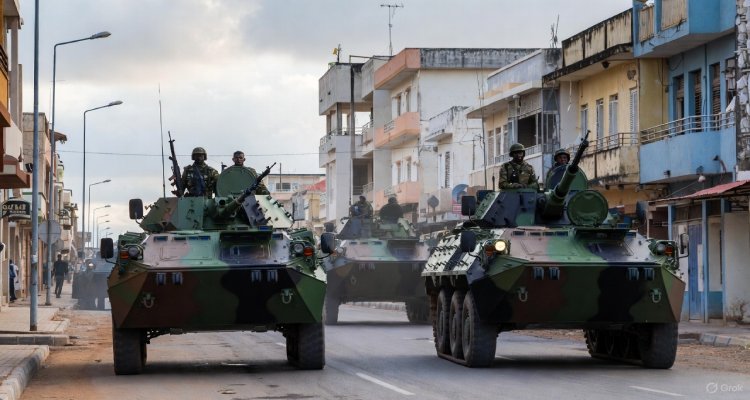Understanding the UAPA: India’s Most Powerful Anti-Terror Law Under the Scanner
India’s Unlawful Activities (Prevention) Act (UAPA) aims to curb terrorism and safeguard national integrity. But new data reveals a stark gap between arrests and convictions.
Introduction: A Law Under Scrutiny
Despite nearly 9,000 arrests under India’s most stringent anti-terror law—the Unlawful Activities (Prevention) Act (UAPA)—between 2018 and 2022, only two cases have been quashed by courts. This revelation, shared by Minister of State for Home Affairs Nityanand Rai in the Rajya Sabha on July 30, reignites questions about the law’s scope, misuse, and judicial outcomes.
Context & Background: What is the UAPA?
Enacted in 1967 under then Prime Minister Indira Gandhi, the Unlawful Activities (Prevention) Act was designed to combat activities threatening India’s sovereignty and integrity. Initially focused on organizations, the law has since evolved dramatically—especially with the 2019 amendment, which gave the government the power to label individuals as terrorists.
Key milestones in the UAPA’s legislative history include:
- 2004, 2008, and 2013 amendments under the UPA, which tightened the law in response to evolving threats.
- 2019 amendment under the Modi government, which empowered the National Investigation Agency (NIA) to attach properties suspected to be linked to terror activities without prior approval from state police chiefs.
- Inclusion of the International Convention for Suppression of Acts of Nuclear Terrorism (2005) into the law’s scope.
This expansion has made UAPA one of the most far-reaching anti-terror laws in India’s legal framework.
Main Developments: Data That Raises Eyebrows
According to data from the National Crime Records Bureau (NCRB), as cited by Minister Rai:
- 8,947 individuals were arrested under UAPA between 2018–2022.
- 6,503 were chargesheeted during the same period.
- Only 252 convictions were secured.
- Just two cases were quashed, both in Kerala in 2022.
- Jammu & Kashmir led with 2,633 arrests, followed by Uttar Pradesh with 2,162.
These figures highlight a significant disparity between arrests and convictions, raising critical concerns about prolonged detentions and judicial outcomes.
Expert Insight & Public Reaction: A Law Too Broad?
Legal experts and human rights organizations have long voiced concern over the low conviction rates under UAPA, citing the potential for misuse. Critics argue that the law’s vague definitions of “unlawful activity” and “terrorist act” leave it open to arbitrary application.
“The problem with UAPA is its pre-trial harshness—people often spend years in jail without a trial even starting,” says Vrinda Grover, a human rights lawyer. “It becomes a tool of punishment, rather than a means to justice.”
Public sentiment, especially among civil rights advocates, has been sharply critical. Cases like that of activist Stan Swamy, who died in custody in 2021 while awaiting trial under UAPA, have triggered outrage and calls for reform.
At the same time, proponents of the law argue that national security concerns necessitate strong legal tools, especially in the face of rising global terrorism and homegrown insurgencies.
Impact & Implications: Liberty vs. Security
The UAPA’s application has real human costs. Extended detentions, slow trials, and a lack of bail options have led to accusations that the law undermines India’s constitutional guarantees of due process and personal liberty.
The 2019 amendment in particular has drawn criticism from international rights bodies, including UN special rapporteurs, for expanding government powers without corresponding judicial safeguards.
Key implications include:
- A growing demand for judicial oversight and time-bound trials.
- Calls for review mechanisms before designating individuals as terrorists.
- Increased international scrutiny of India’s human rights record.
The government maintains that the UAPA is essential for tackling threats such as cross-border terrorism, naxalism, and radicalization. However, the wide gulf between arrests and convictions may prompt a judicial or parliamentary review in the near future.
Conclusion: Time for Reform?
As India continues to balance national security with civil liberties, the Unlawful Activities (Prevention) Act remains a powerful yet controversial legal tool. While its intentions—to protect sovereignty and prevent terrorism—are clear, its implementation has drawn mounting concern.
With only two cases quashed and thousands still awaiting trial, the law’s track record invites scrutiny. Whether the government will address calls for reform or continue with its current trajectory may well define the next chapter in India’s approach to internal security.
Disclaimer : This article is intended for informational purposes only. It does not constitute legal advice. Readers are encouraged to consult official sources and legal professionals for specific interpretations.











